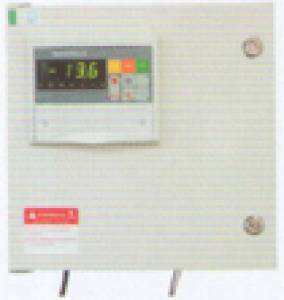Description
Microprocessor Controllers: The Brains of Your Embedded Systems
Microprocessor controllers (μCs) are compact, programmable devices that serve as the central processing unit (CPU) for embedded systems. They combine a microprocessor, memory (both RAM and ROM), and input/output (I/O) peripherals onto a single integrated circuit (IC). This all-in-one design makes them incredibly versatile and efficient for a wide range of applications, from simple household appliances to complex industrial machinery.
Key Features and Benefits:
- Versatile Functionality: Microprocessor controllers handle various tasks simultaneously, including data acquisition, processing, control, and communication. They can interact with sensors, actuators, and other peripherals to manage and automate processes.
- Cost-Effectiveness: Their integrated design reduces the component count, board space, and manufacturing costs compared to systems using discrete components.
- Low Power Consumption: Many μCs are designed for low-power applications, ideal for battery-powered devices and energy-efficient systems.
- Programmability: They are programmed using various programming languages (e.g., C, assembly language) to implement custom functionalities tailored to specific applications. This allows for high flexibility and adaptability.
- Real-Time Capabilities: Many μCs offer real-time operating system (RTOS) support, enabling deterministic and timely responses to external events—critical in applications requiring precise timing.
- Robustness and Reliability: Designed for demanding environments, μCs often incorporate features such as watchdog timers and error detection mechanisms to ensure system stability and prevent malfunctions.
Types of Microprocessor Controllers:
The market offers a broad spectrum of μCs categorized by various factors:
- Architecture: Different architectures (e.g., Harvard, Von Neumann) impact performance and memory management.
- Processing Power: μCs range from 8-bit, 16-bit, 32-bit, and even 64-bit processors, offering varying levels of computational capability. This influences the complexity of tasks they can handle.
- Peripherals: The integrated peripherals significantly impact functionality. Common peripherals include:
- Analog-to-digital converters (ADCs)
- Digital-to-analog converters (DACs)
- Serial communication interfaces (UART, SPI, I2C)
- Pulse Width Modulation (PWM)
- Timers/Counters
- General Purpose Input/Output (GPIO)
- Memory Capacity: The amount of RAM and ROM impacts the data processing capability and program size.
- Power Consumption: Selection depends on the power source and the need for low-power operation.
Applications:
Microprocessor controllers are ubiquitous in numerous applications, including:
- Automotive: Engine control, anti-lock braking systems (ABS), airbag deployment, infotainment systems.
- Industrial Automation: Programmable logic controllers (PLCs), robotic control, process monitoring and control.
- Consumer Electronics: Washing machines, refrigerators, microwaves, remote controls, smart home devices.
- Medical Devices: Pacemakers, insulin pumps, diagnostic equipment.
- Aerospace: Flight control systems, navigation systems, satellite communication.
- Robotics: Control of robotic arms, autonomous vehicles, drones.
Choosing the Right Microprocessor Controller:
Selecting the appropriate μC involves careful consideration of factors like:
- Application Requirements: Define the tasks the controller must perform and the level of processing power needed.
- Power Budget: Determine the power source and the acceptable power consumption.
- Memory Requirements: Estimate the memory needed for program code and data storage.
- Peripheral Needs: Identify the necessary peripherals to interface with sensors, actuators, and communication networks.
- Development Tools and Support: Assess the availability of development tools, software libraries, and community support.
Microprocessor controllers are essential components driving innovation across diverse industries. Their versatility, efficiency, and cost-effectiveness make them the ideal choice for a vast array of embedded system applications.
